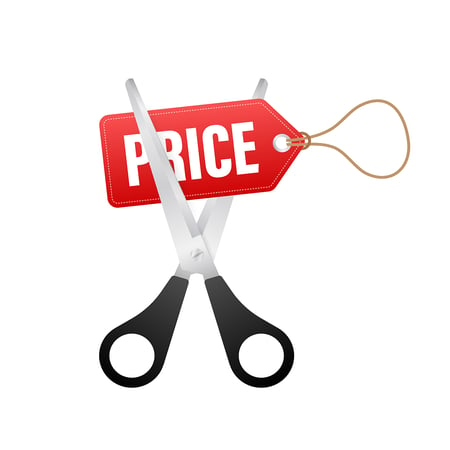And in the blink of an eye, we are more than halfway through February. In another two weeks, two- thirds of Q1 2024 will be in the books, meaning there will be a lot of Sales Leaders and Senior Executives starting to get nervous about Q1 earnings reports. Q1 earnings reports set the tone for the year and a poor Q1 could dig a hole that is impossible to get out of.
thirds of Q1 2024 will be in the books, meaning there will be a lot of Sales Leaders and Senior Executives starting to get nervous about Q1 earnings reports. Q1 earnings reports set the tone for the year and a poor Q1 could dig a hole that is impossible to get out of.
The primary motivation for taking price discounts is to drive revenue to meet top-line (P&L) commitments. However, there are short- and long-term ramifications to the rest of the business and key metrics of performance from pulling that one lever.
For purposes of sharing, I have pulled some content from our core business acumen solution to share ideas and insights on why discounting can be good, bad, or non-consequential based on your current business condition.
From a business acumen perspective, the impact of price discounting on gross margin can be complex and many cases significant. Gross margin – the difference between revenues and the cost of goods sold - is a key financial metric that provides insights into profitability and is typically expressed as a percentage of revenue. Price discounting, while it may increase sales volume in the short term, can have several implications for gross margin:
Immediate Reduction in Gross Margin - Offering price discounts typically means selling products at lower prices, which reduces the revenue generated per unit sold. Since the cost of goods sold remains relatively constant (assuming no changes in production costs), the immediate effect is an immediate reduction in gross margin. For organizations that measure and compensate on profit metrics such as EBIT and EBITDA, a reduction in gross margin can be devastating.
Brand Value and Perception - Frequent price discounting can impact the perceived value of a brand or product. If customers come to expect discounts regularly, they may be less willing to pay full price in the future, leading to challenges in maintaining profit margins over the long term.
Production Volume - Price discounting will most likely lead to increased sales volume as customers are motivated to buy more by lower prices. This increased volume could potentially have impacts on the supply chain and manufacturing if more capacity or raw materials are required.
The Vicious Cycle of Price Cutting from a Competitive Perspective – Cutting prices often triggers a competitive response where key competitors match the discount or even go a little further. When that happens, the is the temptation to do another cut and then the competition will follow suit. This vicious cycle only will lead to poor results and the weakening of your business.
Inventory Reduction and Cleaning Up of the Balance Sheet – Some discounts can be very positive and healthy, especially if there is extra inventory sitting on the balance sheet. Sometimes it’s a very good idea to clear out the inventory, generate some cash, and get the balance sheet healthier.
Driving Operational Excellence – There may be times when discounting prices is just not an option and is it a demand of customers because they are trying to become more operationally efficient. In this scenario, price cutting could trigger greater operational excellence in your business by focusing on optimizing costs. This might involve renegotiating supplier contracts, streamlining production processes, or reducing overhead expenses.




